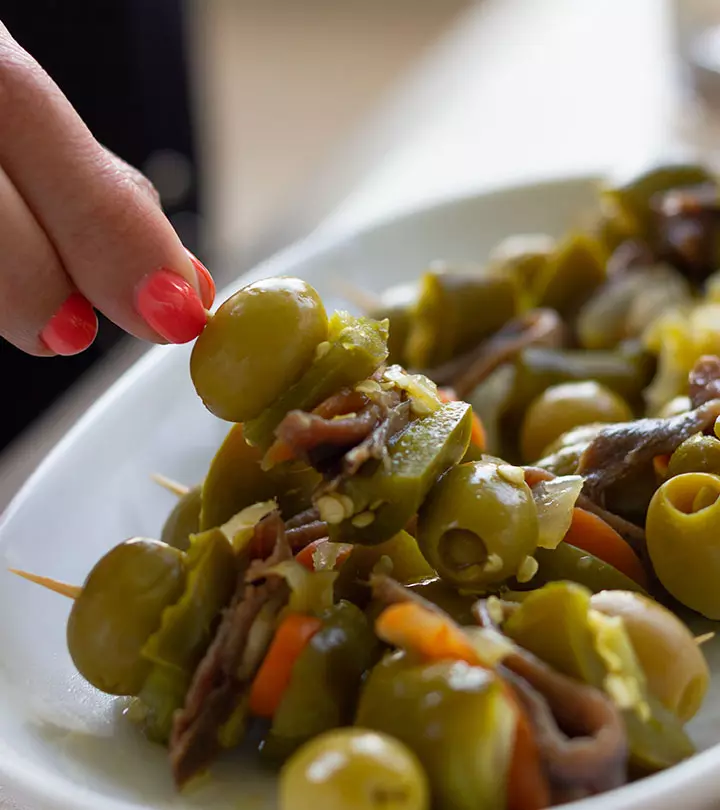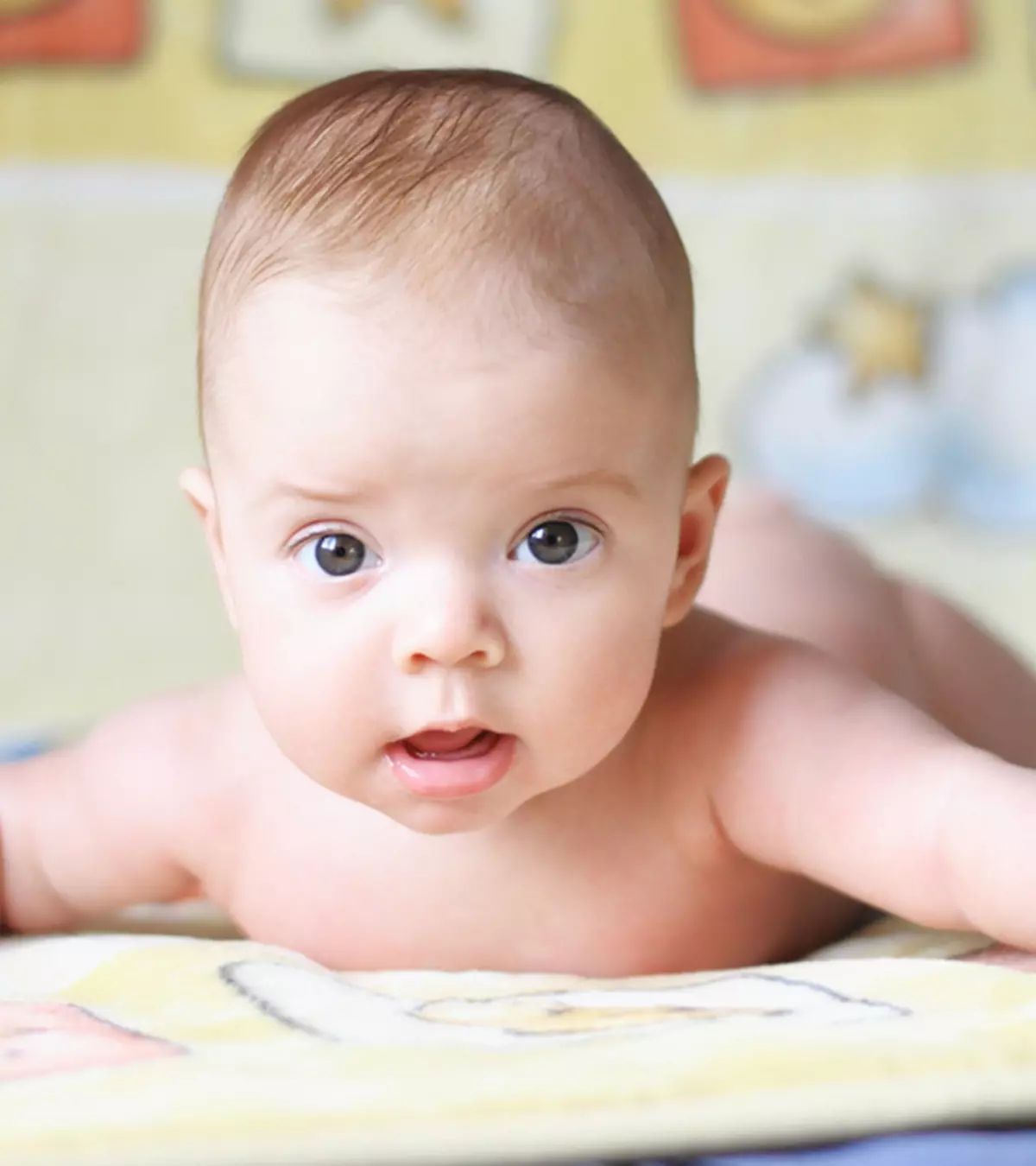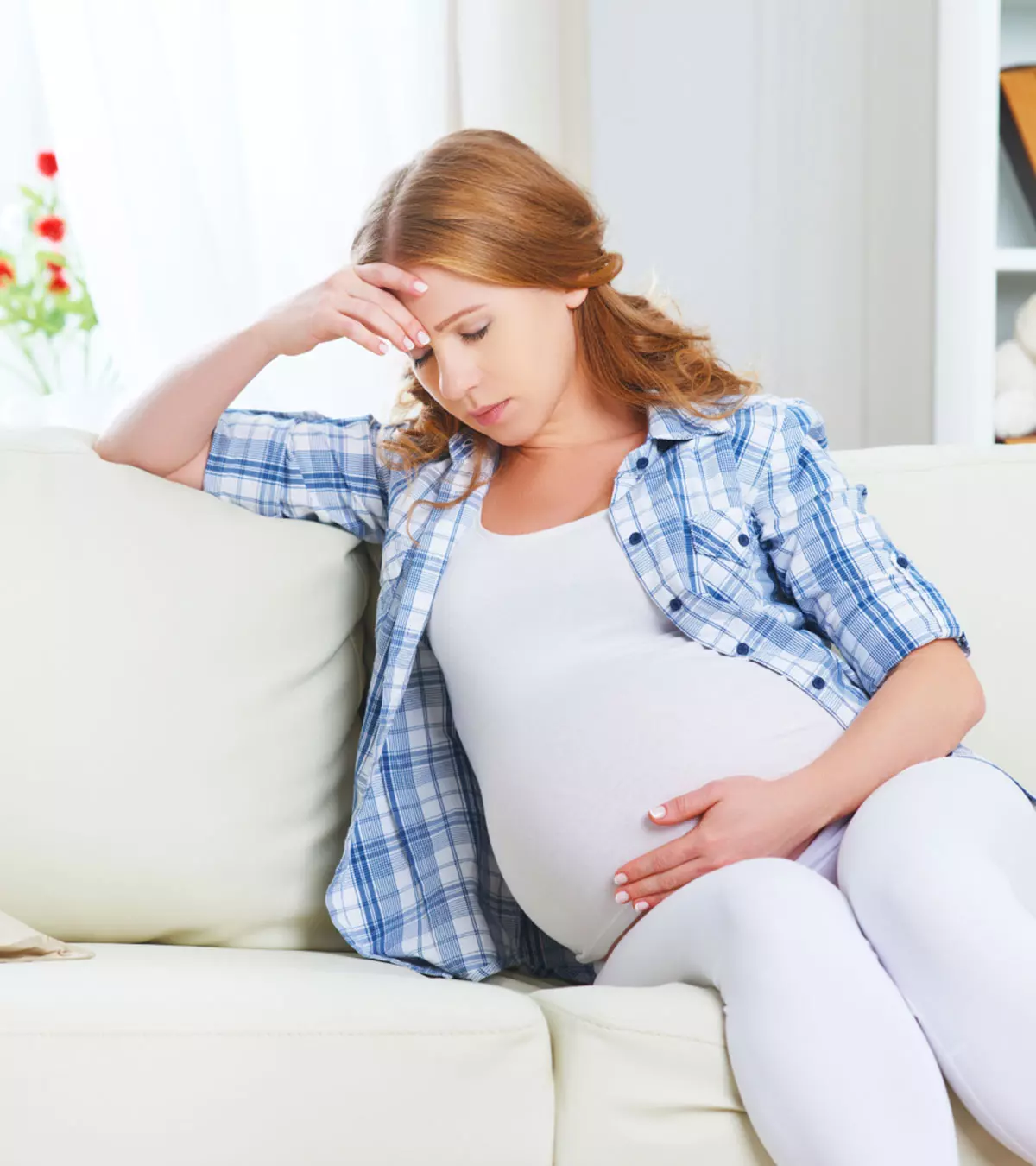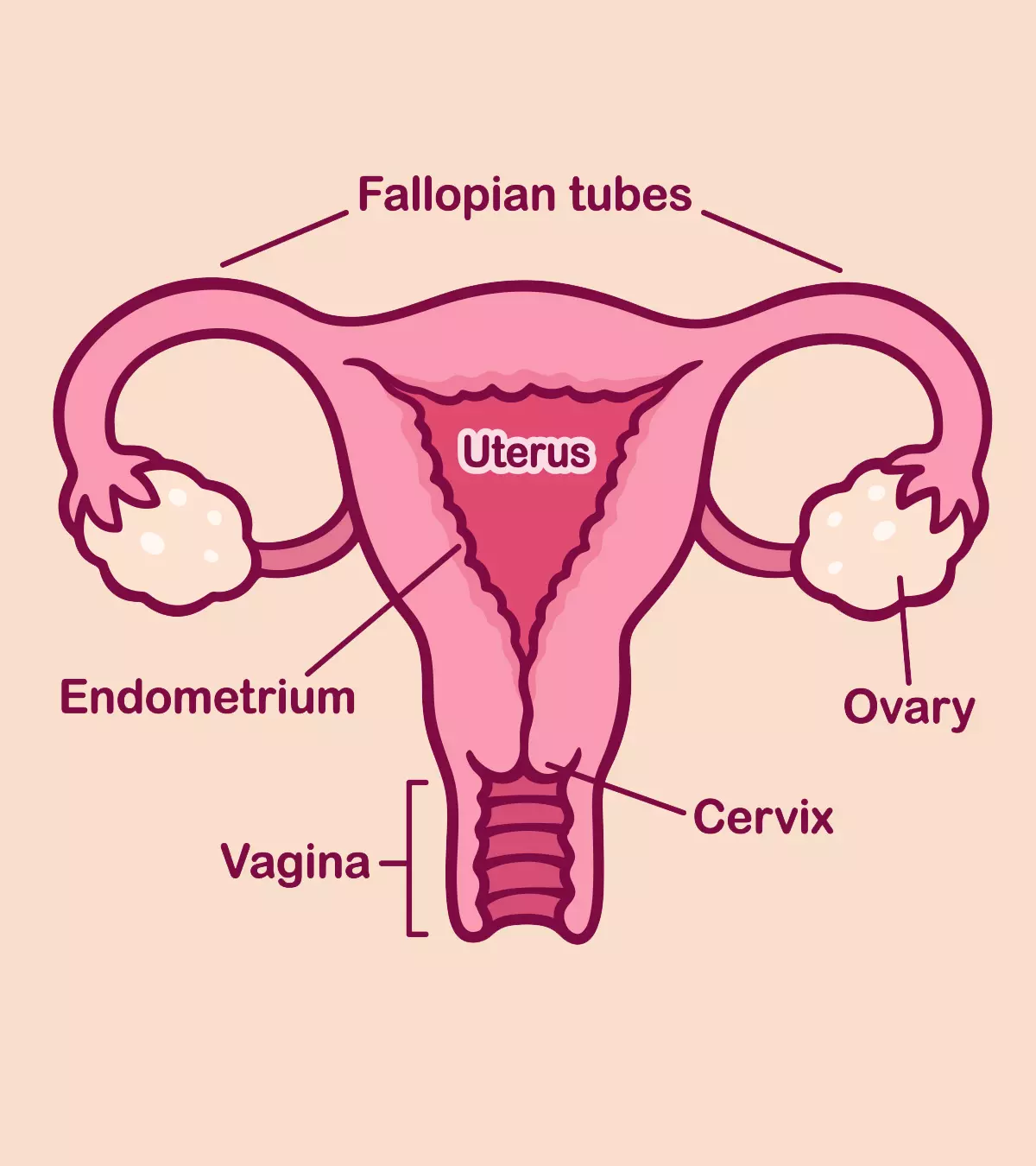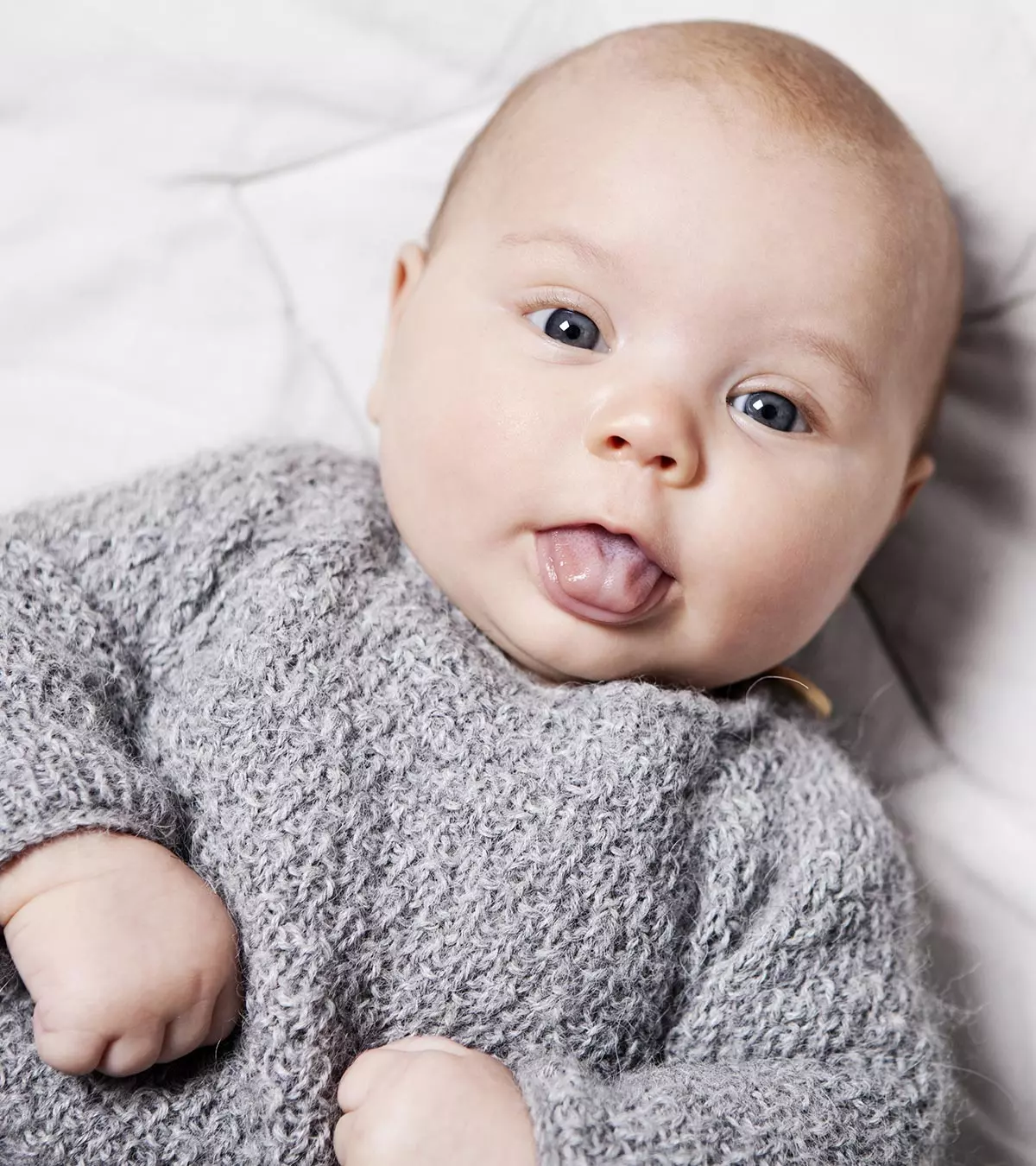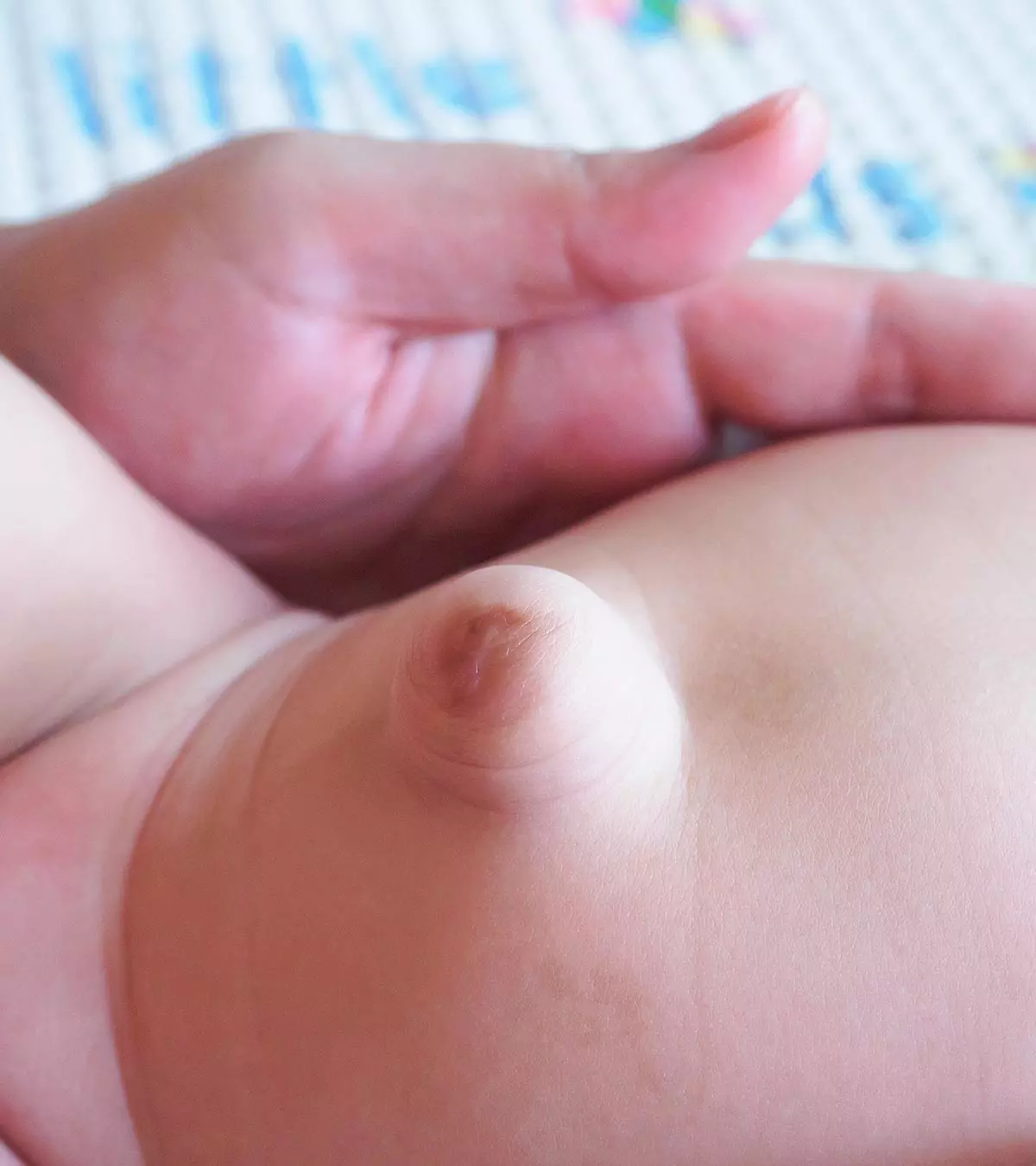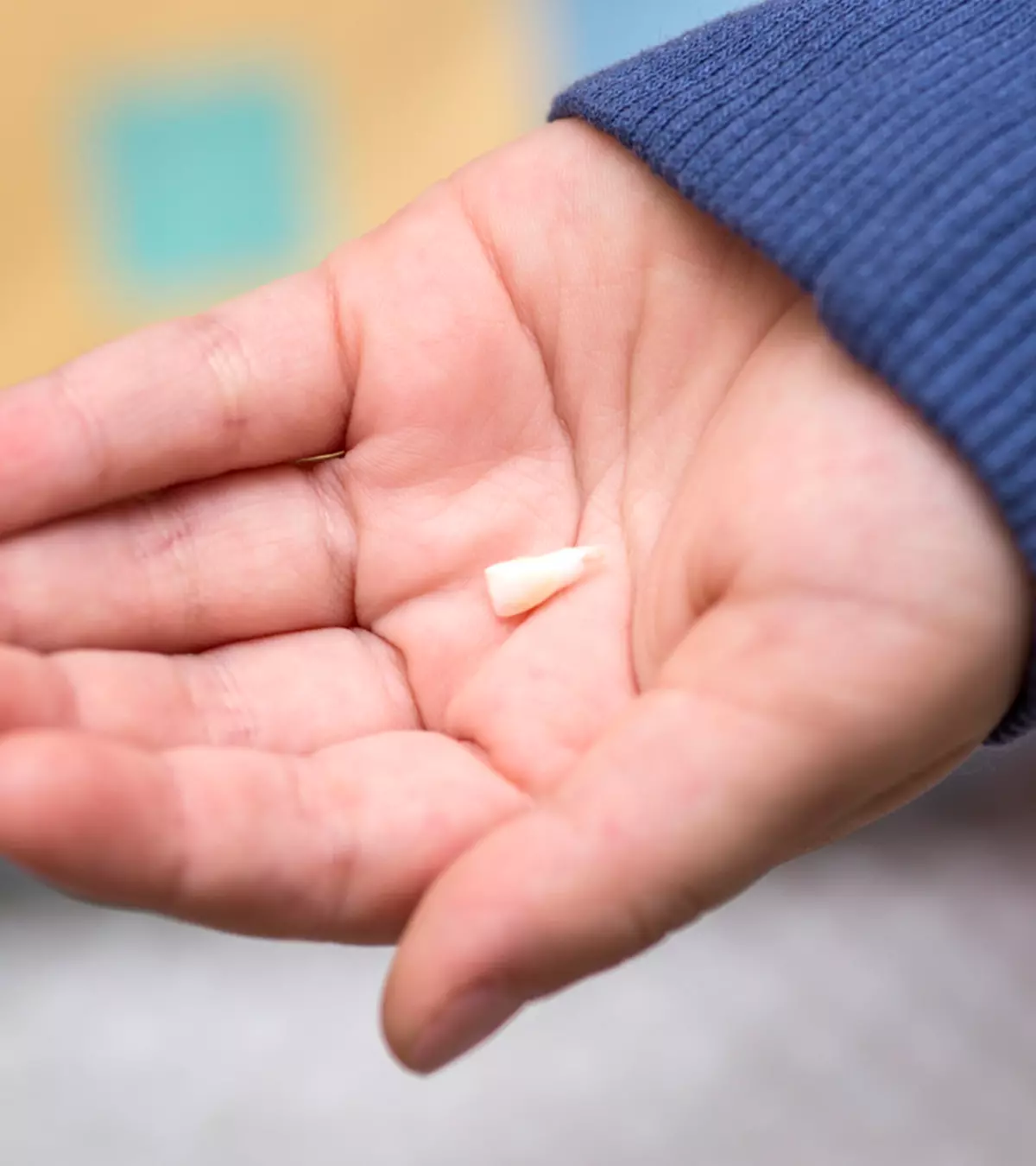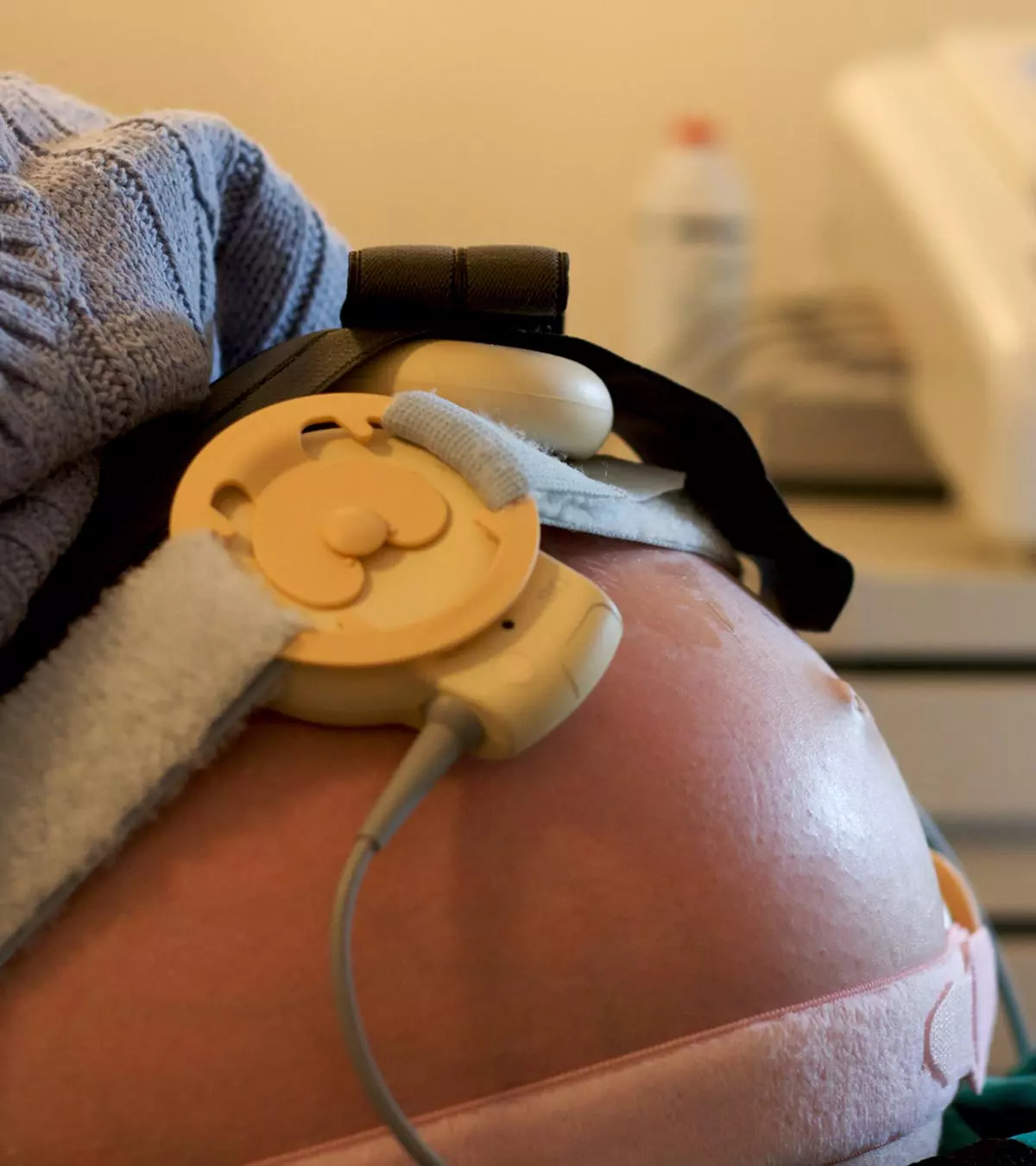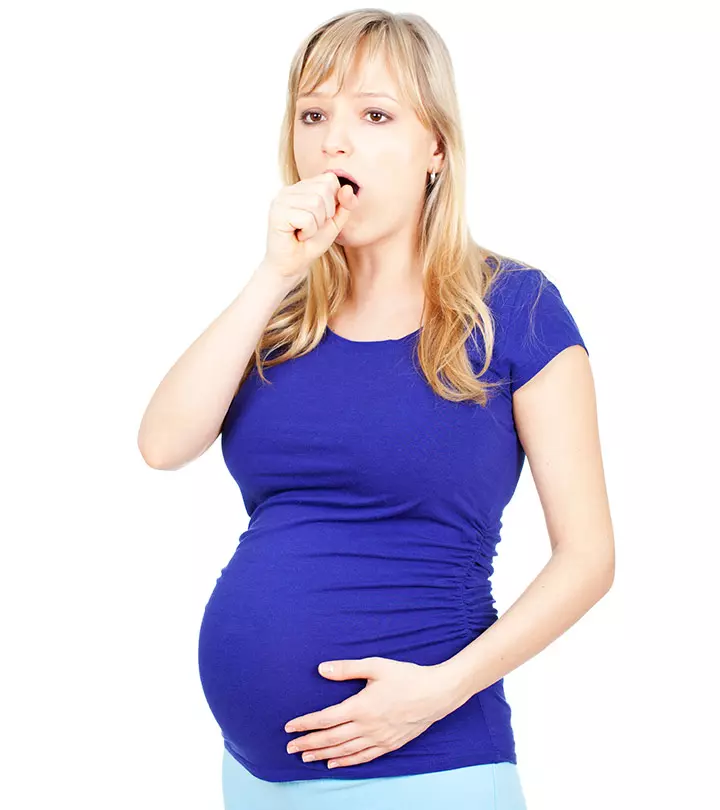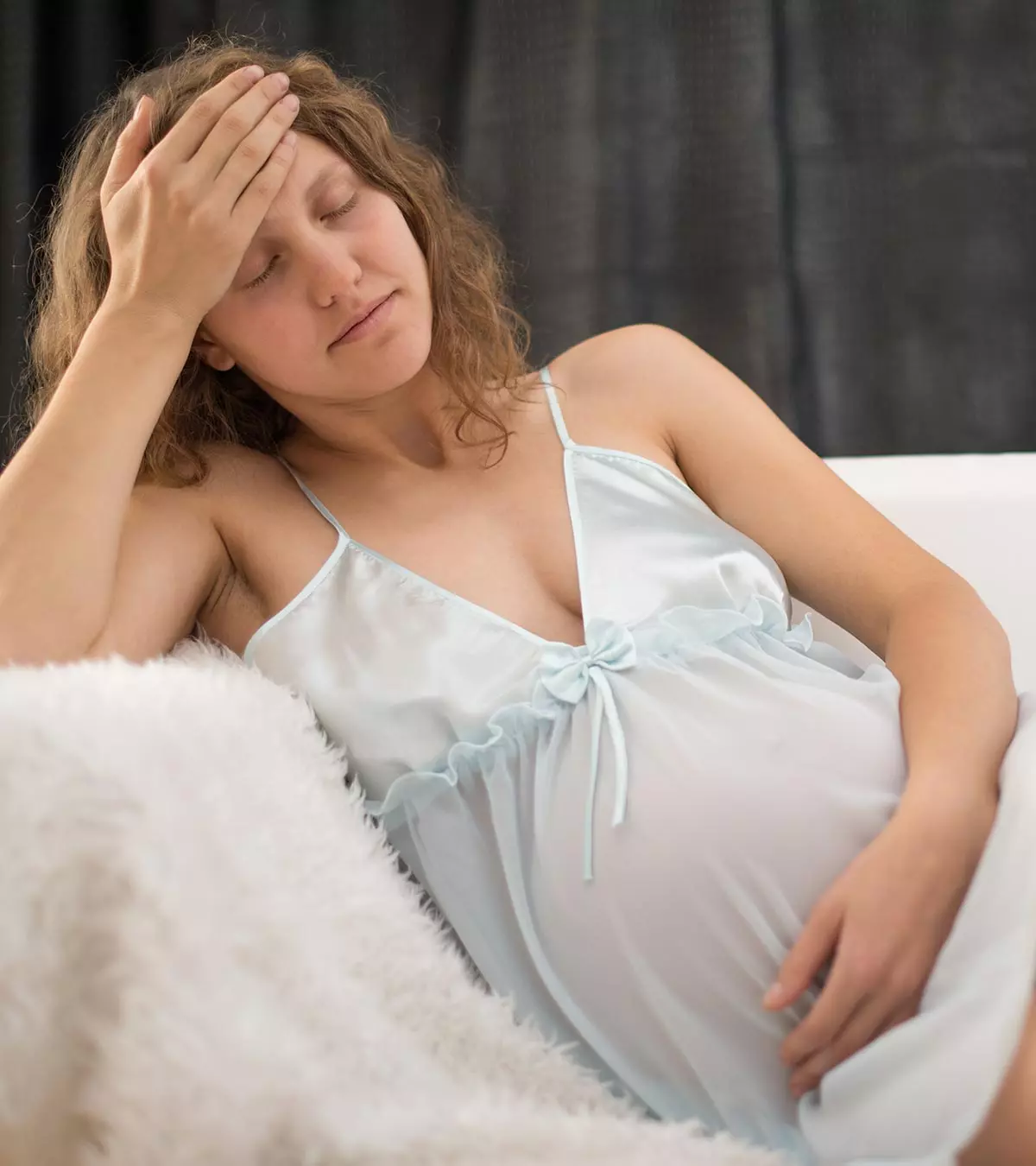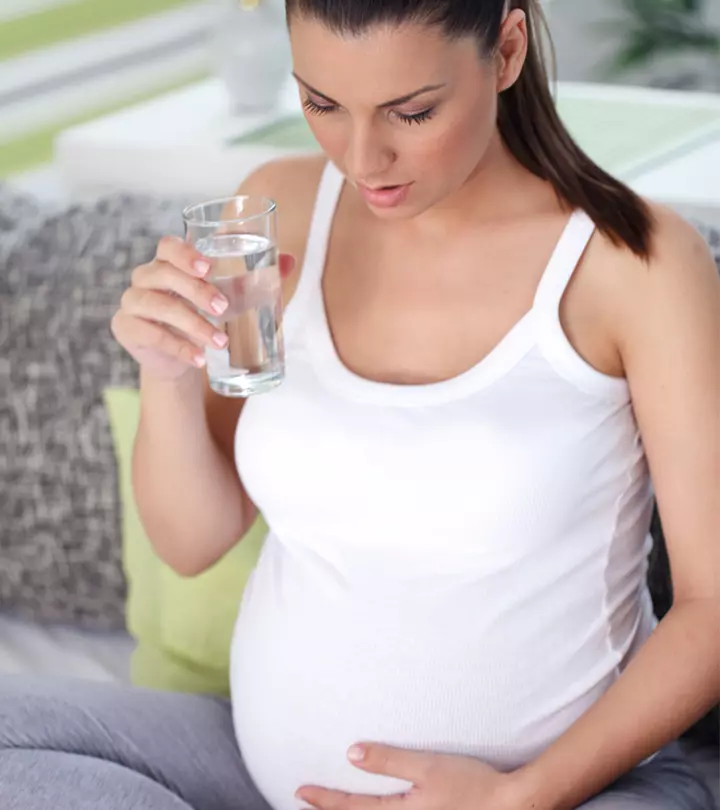
Image: ShutterStock
Pea (Pisum sativum) is a nutrient-rich food with several varieties; yellow and green peas are the most commonly consumed. So, if you plan to feed peas to your baby, here’s all you need to know about pea allergy in babies to help you stay informed. Generally, allergies towards peas are uncommon, but the cross-reactivityiA phenomenon where an antibody directed towards a specific antigen is recognized by different antigens. between peas and peanuts or other legumes like beans and lentils can occur. So, keep reading to know in detail about pea allergy, its symptoms, diagnosis, and effective treatment for babies.

Key Pointers
- The protein Pis s 1 (Vicilin) in peas is the primary allergen associated with pea allergy.
- Babies can develop a pea allergy due to cross-reactivity with other legumes like peanuts, lentils, and beans.
- Symptoms of pea allergy include skin hives, stomach cramps, tingling in the mouth, anaphylaxis, and wheezing.
- Antihistamines, corticosteroid creams, decongestants, saline rinses, and nasal corticosteroids are treatments available for pea allergy.
- It is crucial to never give allergy medication to a baby without a doctor’s approval.
Can Babies Be Allergic To Peas?
According to the US Centres for Disease Control and Prevention (US CDC), 5.8% of all children have a food allergy. Babies can be allergic to peas, especially if they have shown symptoms of allergy or food intolerance for other legumes. Legumes are a family of foods that includes peas, peanuts, beans, and lentils (1).
A research study published in the Journal of American Academy of Pediatrics showed that a high degree of cross-reactivity existed between lentils, chickpea, and peas (2). Besides, pea allergy can also occur due to the ImmunoglobuliniProteins produced by the immune system to protect against foreign invaders like bacteria and viruses E (IgE)-mediated (antibody-mediated) cross-reactivity between peas and peanuts (3).
There is a chance for a baby to outgrow pea allergy over a period. But it is good to consult a doctor before introducing peas to a baby and always follow a three-day pattern when you introduce pea or any new food into the weaningiThe process of transforming your baby’s diet from breastmilk to solids and other liquids. diet.
 Quick fact
Quick factWhat Are The Symptoms Of Pea Allergy In Babies?
The symptoms of pea allergy vary among babies. For some, the symptoms could be mild, while for others, they could be serious. Below is the list of mild symptoms of pea allergen exposure (1) (4).
- Bumps on the skin called skin hives on any part of the body. Severe cases could cause eczemaiA skin condition characterized by red, itchy, and dry patches and can be managed with proper skin care and medication , urticariaiA skin rash characterized by itchy bumps, often triggered by certain foods or medications. and nettle rashiRound red bumps on the skin usually caused by an allergic reaction to specific foods.
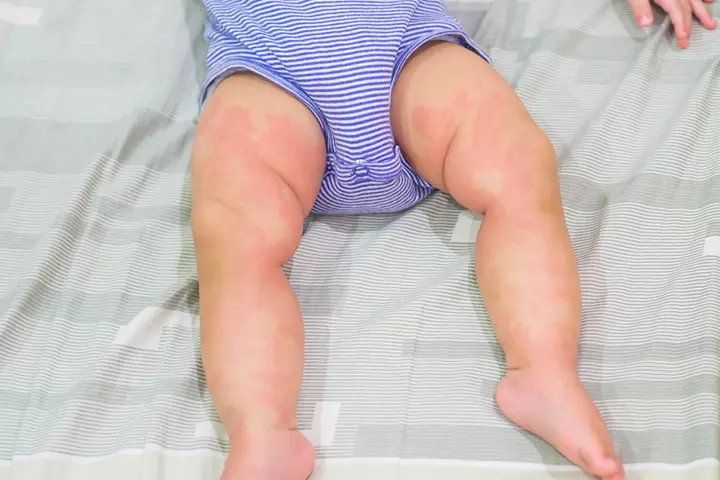
Severe symptoms could be as follows:
- WheezingiA condition where breathing causes high-pitched whistling sounds because the air passages become narrow
- Difficulty breathing,asthma (it can worsen if already present), and increased heart rate
- AnaphylaxisiAn extreme reaction to an allergen causing breathing difficulties and loss of consciousness , which can cause the sensation of choking and severe difficulty in breathing
According to the American Academy of Pediatrics (AAP), green peas might be one of the causes of Food Protein-Induced Enterocolitis Syndrome (FPIES). This rare gastrointestinal food allergy typically affects infants under six months (18).
It is best to seek medical assistance irrespective of mild or severe allergy or food sensitivity symptoms. Timely action could avoid complications and also help in diagnosis.
 Did you know?
Did you know?How Is Pea Allergy In Babies Diagnosed?
Below are some diagnosis methods that are likely to be used by the doctor to determine food allergies in babies (5).
- Personal and medical history: The healthcare provided will ask about the baby’s past allergy episodes if any. The details of food allergies experienced by other family members will also be noted.
- Physical exam: The baby’s ears, eyes, nose, throat, chest, and skin will be examined. An exam of lung function and X-ray of lungs or sinuses could also be done.

- Food elimination test: The parents will be instructed to eliminate suspected food items from the baby’s diet. You will need to eliminate the food for the duration instructed by the doctor.
A skin prick test can provide an accurate diagnosis of suspected allergen, but the test might not be performed on infants due to the risk of causing a severe allergic reaction. An allergen-specific blood test is another option that measures IgE levels, an antibody the body produces in response to an allergen. This test is often done alongside or instead of a skin prick test, with a small needle typically used to collect blood from the infant’s heel (6).
Sharing her insights, Dr. Julia Upton, a Canadian allergist, explains that testing the specific food causing a reaction and clicking a photo of the food label can aid in diagnosing a potential pea allergy (19).
If the diagnostic steps consistently raise suspicion towards peas in the baby’s diet, then a pea allergy is confirmed.
Reflecting on her son’s pea allergy diagnosis, Nena, a mother and nutrition coach, says, “My son, Andrej, was about 7 or 8 months old when I decided to make him a veggie and chicken purée. I was already cooking peas and carrots for a salad, so I took some from the pot, mixed them with cooked chicken and a few mild spices, and blended everything. At first, he seemed to like the taste, but after the second spoonful, he started refusing it. He also began making a strange noise with his tongue. After about five or six minutes, I noticed redness around his mouth and cheek. As I watched, the redness on his face started spreading, and hives appeared, and I honestly got scared. The following day, I scheduled an appointment with our pediatrician… She referred us to an allergist, and when we met with her and described what had happened, she immediately said, ‘Oh, this sounds like a pea allergy’ (i).”
 Research finds
Research findsHow To Manage Pea Allergy In Babies?
The management of pea allergy involves reducing the intensity of the symptoms. Below are some medicines that can help provide relief from the symptoms of pea allergy (7).
- Use a saline rinse: If your baby is suffering from nasal congestion due to an allergic reaction, then a nasal saline rinse might provide some relief. Consult the doctor to learn the right type and dosage of saline drops.
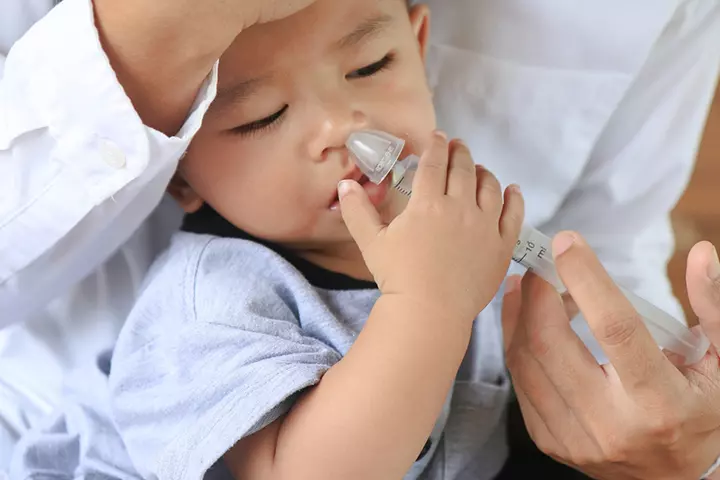
- Corticosteroid creams or ointments: Corticosteroids, also known as steroids or cortisone, are highly effective for the treatment of skin allergies in babies. These are used topically for relief from hives, nettle rash, and urticaria.
- Antihistamines: This class of medication can help calm sneezing, itching, runny nose, and hives.
- Nasal corticosteroids: These nose sprays are used to relieve nasal allergies. They generally provide relief against the swelling caused by the persistent runny and itchy nose.
- Decongestants: It can help provide relief from severe congestion of the nose and airways due to an allergic reaction. A decongestant is often administered in combination with an antihistamine.
Never give any allergy medicine to the baby without a doctor’s recommendation. The doctor will suggest the medicines after taking into consideration the baby’s age, the severity of the symptoms, and general health. In severe cases of allergy, the doctor might suggest extensive treatment methods such as immunotherapyiTreatment modality that uses the body’s immune system to fight diseases, used most notably for treating cancers. (8).
Treatment will provide relief to your baby. However, precautions will help prevent a recurrence.
 Point to consider
Point to considerHow To Prevent Pea Allergy In Babies?
The following precautionary measures can help the baby avoid the symptoms of pea allergy (8) (9).
- Avoid allergen:If possible, avoid giving peas to the baby. You can replace peas with other legumes to which the baby is not allergic. Speak to a pediatric nutritionist to determine the best food to replace peas in the baby’s diet.
- Check labels: Peas can be a part of many ready-to-feed baby foods. If you are feeding any packaged food to your baby, check for the labels.

- Try to carry baby’s meals: If you are traveling or stopping by at someone’s place, then it is best to prepare and carry the baby’s meals. It will help you ensure the baby’s food does not have peas and reduce the risk of hypersensitivity reactions.
 Point to consider
Point to considerFrequently Asked Questions
1. Are Frozen peas good for babies?
Yes. Babies may be given frozen peas (10). Frozen vegetables retain their nutrient value and are beneficial if they do not contain preservatives and added salt and sugar (11).
2. When can babies eat peas whole?
Children under five years are at the greatest risk of injury due to choking (12). Some whole foods can be a choking hazard, so it is better not to give whole peas to babies and wait until they are old enough (13).
3. Do peas make babies gassy?
Peas have the potential to cause gas or discomfort (17). Giving green peas in large quantities may cause digestion difficulties in babies. However, moderate consumption is considered safe.
4. What to do if I suspect my baby has a pea allergy?
If your baby shows signs like vomiting, skin rashes, wheezing, or bowel changes, stop feeding peas and document the symptoms (1). Monitor their condition closely. Do not delay medical care if symptoms worsen or new ones appear.
Because babies are still unfamiliar with different food groups and their immunity is not as robust as adults, it is common for them to be allergic to certain foods. Be mindful of their reactions in order to recognize the allergy and switch to different foods while taking the necessary precautions to avoid contact with any potential allergens. Likewise, pea allergy in babies can be managed as long as you are aware of the symptoms and seek timely treatment.
Infographic: What Are The Signs Of Peanut Allergy In Babies?
While peanuts are nutrient-enriched, they can be high-risk allergenic food to some. Therefore, when introducing them to your baby, follow the three to five days “wait and watch” rule and look for possible allergic reactions such as those in the infographic below. Keep reading!
Some thing wrong with infographic shortcode. please verify shortcode syntax
Illustration: Pea Allergy In Babies: Symptoms Treatment And Prevention

Image: Stable Diffusion/MomJunction Design Team
Personal Experience: Source
MomJunction articles include first-hand experiences to provide you with better insights through real-life narratives. Here are the sources of personal accounts referenced in this article.
i. Is Pea Allergy Real and Where are Peas Hiding?;
https://nenaswellnesscorner.com/is-pea-allergy-real-and-where-are-peas-hiding/
References
1. Legume allergy; Nottingham University Hospitals
2. In Vitro and In Vivo Cross-reactivity Studies of Legume Allergy in a Mediterranean Population; American Academy of Pediatrics
3. Wensing M et al.,Patients with anaphylaxis to pea can have peanut allergy caused by cross-reactive IgE to vicilin (Ara h 1).; National Center For Biotechnology Information
4. Legumes (Including Pulses); Anaphylaxis Campaign
5. Allergy Diagnosis, Allergy; Asthma and Allergy Foundation of America
6. Allergen Specific IgE Test; The Children’s Hospital of Philadelphia
7. Allergy Medicine for Children; Healthy Children; American Academy of Pediatrics
8. Treatment, Allergies; NHS
9. Allergy Treatment; Asthma and Allergy Foundation of America
10. FINGER FOODS FOR BABY; Minnesota Department of Health
11. Frozen Foods: Convenient and Nutritious; Academy of Nutrition and Dietetics
12. Choking Prevention for Children; NewYork State Department of Health
13. Choking Hazards; Centers for Disease Control and Prevention
14. Jasmin Popp et al., Pea (Pisum sativum) allergy in children: Pis s 1 is an immunodominant major pea allergen and presents IgE binding sites with potential diagnostic value; Clinical and Experimental Allergy
15. Mark Smits et al., Legume Protein Consumption and the Prevalence of Legume Sensitization; National Center For Biotechnology Information
16. M Sell et al., Influence of maturation on the alteration of allergenicity of green pea (Pisum sativum L.); National Center For Biotechnology Information
17. Foods Likely to Cause Gas; International Foundation for Gastrointestinal Disorders
18. Food Allergies and Intolerances in Newborns and Infants; American Academy of Pediatrics
19. Ask the allergist: Your questions answered – March 2025; Food Allergy Canada
20. R. Abi Melhem and Y. Hassoun; (2025); Is Pea Our Hidden Allergen? An American Pediatric Case Series; Annals of Allergy, Asthma & Immunology
21. Legume allergy; Sheffield Children’s NHS Foundation Trust
Community Experiences
Join the conversation and become a part of our nurturing community! Share your stories, experiences, and insights to connect with fellow parents.
Read full bio of Divya Diwaker
Read full bio of Swati Patwal
Read full bio of Rohit Garoo
Read full bio of Anindita Ghatak






